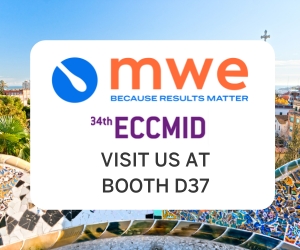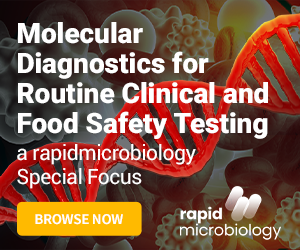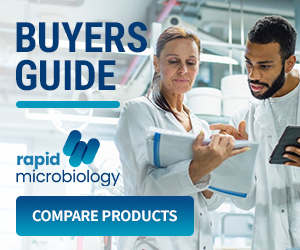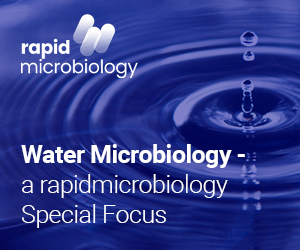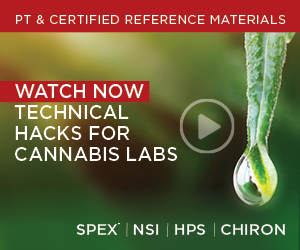Salmonella Detection and Identification Methods for Food Processors
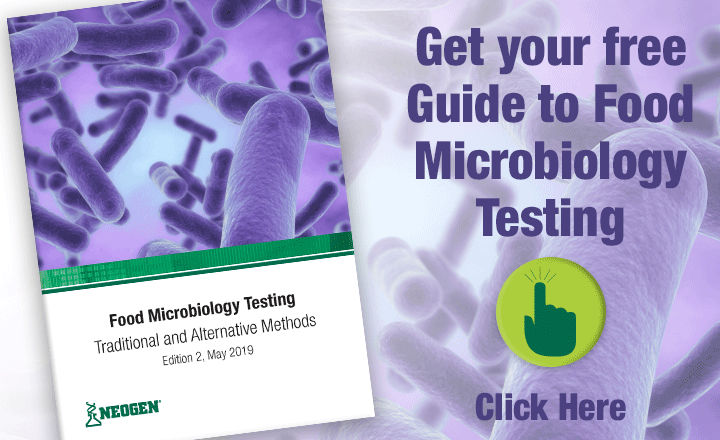
Key Points
- The genus Salmonella contains only two species, but includes around 2,500 ‘serovars’, many of which can cause human illness, often food borne
- Traditional detection and confirmation methods are long established and typically take 3-5 days to obtain a result
- Rapid detection and confirmation methods are widely available and are capable of reducing detection times to 48 hours or less
As well as being the cause of enteric (typhoid) fever, an important infectious disease, Salmonella is perhaps best known as a cause of bacterial food poisoning. Although typhoid fever has been largely eradicated in the developed world, Salmonella food poisoning has long been, and continues to be, an important global public health problem. In much of Europe and North America, Campylobacter is now the most frequent cause of foodborne human infections, but Salmonella remains a very important and widespread pathogen. It is a major cause of concern for the food industry, where its control is vital for products ranging from cooked meats to chocolate and from fresh produce to peanut butter.
Given the long history of foodborne salmonellosis, it is not surprising that the need for microbiological testing of food ingredients and food products is very significant. A substantial number of methods, both traditional and rapid, have been developed over the years for the detection and identification of Salmonella.
Salmonella enterica
Bacteria of the genus Salmonella are Gram-negative, facultatively anaerobic, non-spore forming, usually motile rods belonging to the family Enterobacteriaceae and primarily associated with animals. The genus currently contains just two species, Salmonella enterica (including six subspecies) and Salmonella bongori. Most of the Salmonella isolates from cases of human infection belong to Salmonella enterica subspecies enterica. The genus is also further subdivided into approximately 2,500 serovars (or serotypes), characterised on the basis of their somatic (O) and flagellar (H) antigens.
Until recently, individual serovars were referred to as if they were species, for example Salmonella typhimurium. However the current convention is to refer to this serovar as Salmonella enterica subsp. enterica serovar Typhimurium. Fortunately, it is customary to shorten this to Salmonella Typhimurium. The commonest serovars associated with human disease are S. Typhimurium and S. Enteritidis, but many others have been shown to cause disease, notably S. Infantis, S. Virchow and S. Newport.
Individual serovars can be further characterised (typed) by a number of methods, including phage typing and antibiotic resistance profiles. The most severe form of Salmonella infection is typhoid fever caused by serovars adapted to a human host, such as S. Typhi and S. Paratyphi. But infection by non-typhoid salmonellae is much more common and usually causes gastroenteritis, with symptoms including diarrhoea, abdominal pain, nausea and vomiting lasting from 1-7 days. Healthy adults rarely suffer other symptoms and the mortality rate is <1%, but children, the elderly and the immuno-compromised may develop much more severe infections, such as septicaemia. The infective dose can be quite low (10-100 cells) in vulnerable individuals or when contaminated food with a high fat content, like chocolate or cheese, is consumed.
The incidence of salmonellosis has been falling steadily in Europe since the mid 1990s. In 2011, approximately 95,500 cases of human salmonellosis were recorded. This almost certainly represents considerable under-reporting, and the real number of cases could be a factor of 10 to 100 times greater. A similar pattern has been seen in the USA, but the incidence has remained steady at roughly 15 cases per 100,000 people since 2001. One reason for the decline in cases in the late 1990s was better control of S. Enteritidis in egg production. Outbreaks of foodborne salmonellosis are still common and have been associated with a very wide variety of foods, including dairy products, eggs, fruit juice, fresh produce, herbs and spices, chocolate confectionery, cereals, cooked and cured meats and ice cream. For example, a outbreak in the USA in 2009 was caused by S. Typhimurium in peanut butter and peanut paste and affected nearly 700 people nationwide. Salmonella is a very common component of the gut microflora of animals, including humans, other mammals, birds, reptiles and amphibians, and is thus found in their faeces. Faecal pollution is the main route by which food and water supplies become contaminated and largely accounts for the ubiquity of Salmonella in the food supply chain. Food animals, especially poultry and pigs, can also become infected and act as reservoirs of Salmonella.
Salmonellae are not heat resistant and do not grow at low temperatures, but they are surprisingly tough and are not killed by freezing. They may also survive well in acid foods and resist dehydration. This means that, while not able to multiply in many processed foods, if contamination is present, it can be difficult to eradicate. For example, fatty foods can protect the cells from quite severe heat treatments making pasteurisation ineffective.
Detection and Isolation
Storage and Preparation of Samples - Stool samples are the most frequently tested clinical materials for Salmonella. Animal faeces and water sources may also be tested. Large numbers of food ingredients and food products are routinely tested by the food industry, since the presence of Salmonella in any ready-to-eat food is not acceptable. A wide variety of foods may be tested, but meat products, eggs and dairy products are a particular concern. Other foods and ingredients where regular tests are required include, chocolate confectionary, herbs and spices, fresh salads, fruits, seeds and nuts, flour and shellfish. Sampling from animal carcases at slaughter may also be carried out.
Salmonella is not able to grow at low temperatures and samples should be refrigerated if they cannot be sent for analysis immediately. The cells survive well in frozen foods and other materials, but samples should be kept frozen prior to testing. Typically, 25g food samples are cultured in detection testing, but dried foods require a resuscitation stage for sub-lethally damaged cells in non-selective pre-enrichment media, such as buffered peptone water, before further culture. Furthermore, some dried foods, notably herbs and spices and dried onions, contain compounds that could inhibit Salmonella growth in enrichment cultures. These compounds should be neutralised, either by the addition of a suitable neutralising agent, or by additional dilution.
Traditional Methods - Clinical samples are typically cultured directly onto selective agar media, such as Xylose-Lysine-Desoxycholate (XLD) agar, and incubated at 37oC for 18-24 hours. In addition, stool samples are usually inoculated into a selective enrichment broth, such as selenite cystine broth and incubated at 37oC for 18-24 hours, before plating out onto selective agars.
There is a current ISO horizontal method, ISO 6579: 2002, for the detection Salmonella spp. in food and animal feed. The method was amended in 2007 to include testing of animal faeces and environmental samples from primary production. Similar standard methods have been published elsewhere by other bodies, notably in the USFDA Bacteriological Analytical Manual (BAM). The first stage in traditional detection methods for most food samples is usually a pre-enrichment culture in a non-selective liquid medium such as buffered peptone water, incubated at 37oC for 18 hours. Modified pre-enrichment methods may be necessary for samples containing inhibitory compounds. The pre-enrichment culture is then typically subcultured into two different selective enrichment media, such as Rappaport Vasiliadis Soy broth (RVS) and Muller-Kauffmann Tetrathionate-Novobiocin (MKTTn) broth, and incubated for a further 24 hours at 41.5oC (RVS) or 37oC (MKTTn).
The selective enrichment culture is usually inoculated on to at least two selective agar media and incubated at 37oC for 24 hours. The ISO method specifies the XLD agar and one optional selective medium. A variety of alternatives are available, including Bismuth Sulphite agar, Brilliant Green agar and Hektoen Enteric agar. A number of selective chromogenic agar media specifically designed for the differentiation of Salmonella colonies are commercially available. Typical Salmonella colonies on selective agar are subcultured onto non-selective media prior to confirmatory testing.
Rapid Methods - It can take at least three to five days to obtain a result using traditional methods of detection for Salmonella spp. For this reason a substantial number of alternative rapid screening methods have been developed to produce results more quickly for food and environmental samples. Many of these are available commercially and have been successfully validated by the AOAC and/or AFNOR. The AOAC database of performance tested methods contains more than 40 products for the rapid detection of Salmonella.
Salmonella rapid test and screening kits utilise several different technologies, including novel culture techniques, immunomagnetic separation, EIA- and ELISA-based assays incorporating fluorescent or colorimetric detection, simple lateral flow assays incorporating immunochromatographic technology, and molecular techniques such as DNA hybridisation and PCR-based assays, many of which now include real-time detection. Some methods can be automated to screen large numbers of samples. Almost all rapid test protocols include a selective enrichment stage, and then apply concentration and/or rapid detection techniques to replace culture on selective agars and further confirmatory tests. Most can claim to produce a result in approximately 48 hours or less, depending on the enrichment protocol.
Confirmation and Identification
Traditional Methods - There are well established confirmation and identification procedures for Salmonella spp. Preliminary identification based on colony appearance on chromogenic and other selective agar media is traditionally confirmed using classical biochemical tests for Salmonella and serological testing. Key biochemical tests are fermentation of glucose, negative urease reaction, lysine decarboxylase, negative indole test, H2S production, and fermentation of dulcitol. Serological confirmation tests typically use polyvalent antisera for flagellar (H) and somatic (O) antigens. Isolates with a typical biochemical profile, which agglutinate with both H and O antisera are identified as Salmonella spp. Where results are inconclusive, it may be necessary to perform additional biochemical tests for Salmonella.
Positive isolates are often sent for further serotyping to identify the serovar using specific antisera. However, this is normally a task for specialist reference laboratories and is rarely undertaken in routine food or clinical laboratories. Reference labs are also able to type isolates further using techniques such a phage typing, antibiotic susceptibility and pulsed-field gel electrophoresis (PFGE).
Rapid methods - Many rapid confirmation and identification methods have been developed for Salmonella and a large number have been developed into commercial products. In addition many of the rapid detection kits mentioned above can also be used for confirmatory testing. Biochemical confirmation can be accomplished using commercial identification systems.
Rapid immunological identification and confirmation tests based on latex agglutination, enzyme immunoassay (EIA) and enzyme-linked immunosorbent assay (ELISA) have been developed for Salmonella, and simple-to-use lateral flow test strips using immunochromatographic technology have also been developed into commercial products by a number of manufacturers.
Molecular methods are also available, notably DNA hybridisation and PCR assays for the identification of Salmonella enterica. However, these are generally designed for use as part of a method for rapid detection and screening rather than for confirmation. A range of DNA-based typing techniques have also been developed for use by specialist laboratories involved in the investigation of food-borne disease outbreaks. Even whole genome sequencing has become a practical tool for the characterisation of Salmonella strains implicated in outbreaks.
Also read, Rapid Detection Methods for Salmonella in Foods by Dr. Suzanne Jordan, Molecular Methods Manager, Campden BRI. For more information on kits and product to test for Salmonella in Foods - go to https://www.rapidmicrobiology.com/product-finder/food-beverage/salmonella


